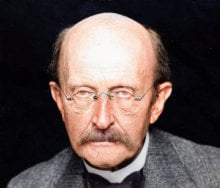Max Planck's The Theory of Heat Radiation is a seminal work in the field of theoretical physics. It presents Planck's law of black-body radiation, which revolutionized the understanding of quantum mechanics.
 Max Plancks biography, Nobel Prize-winning physicist who revolutionized modern physics with his quantum theory. Explore his life, research, and quotes.
Max Plancks biography, Nobel Prize-winning physicist who revolutionized modern physics with his quantum theory. Explore his life, research, and quotes.
More about Max Planck